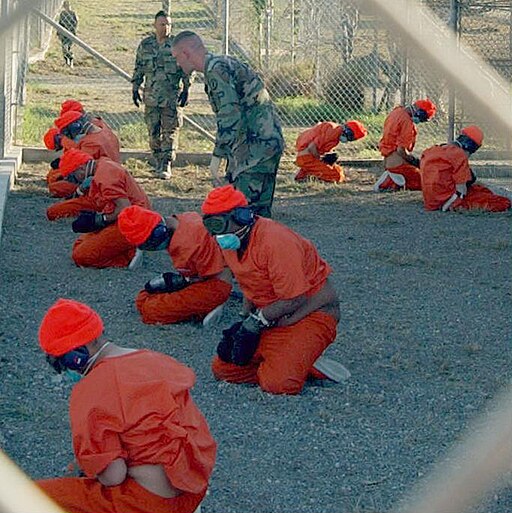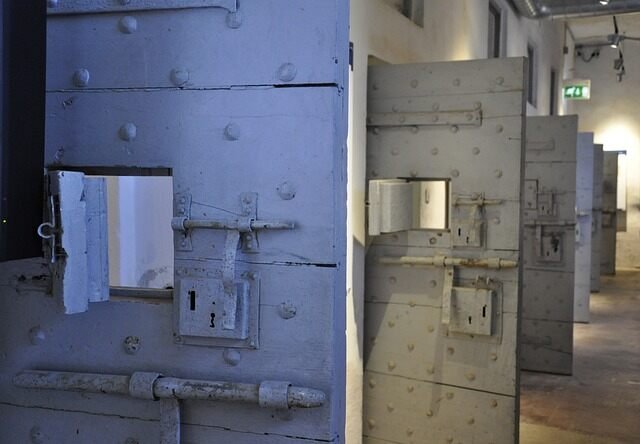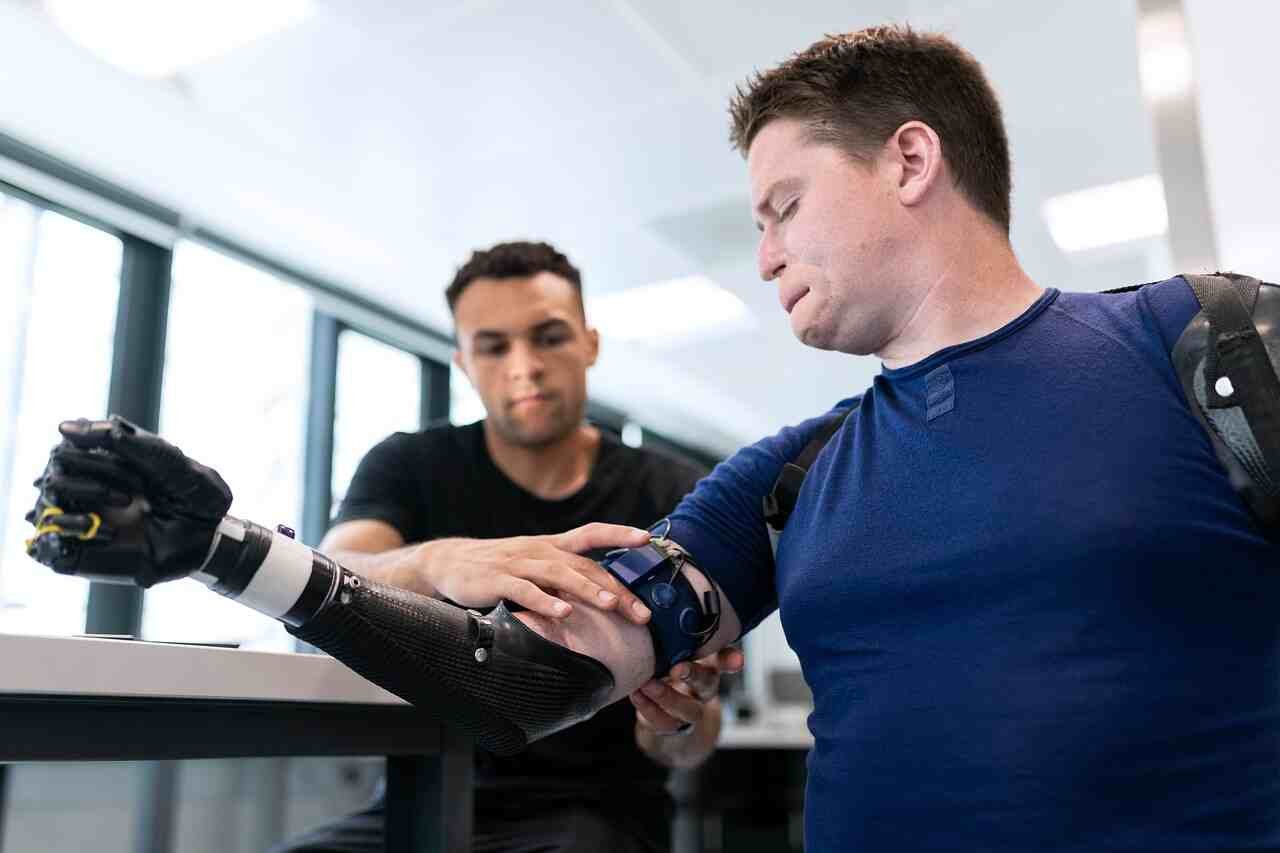What Are the Worst Jail in The World?
Determining the worst jail in the world is a complex and subjective matter, as there are many factors to consider, such as the severity of the conditions, the level of violence and corruption, and the overall treatment of inmates. However, some jails have been repeatedly cited for their particularly harsh and inhumane conditions, making them stand out as some of the worst in the world.
Here are a few of the most notorious jails in the world:
1. Black Dolphin Prison, Russia
Black Dolphin Prison is a maximum-security prison in Russia that houses some of the country’s most dangerous criminals, including murderers, rapists, and terrorists. The prison is known for its brutal conditions, including solitary confinement, torture, and forced labor.
Guards are reported to enforce strict discipline, involving solitary confinement and allegations of torture, contributing to harsh conditions.

The Fountain ‘Black Dolphin’ Black Dolphin Prison in Sol-Iletsk, Orenburg Oblast, Russia. Людмила Иванова / Lyudmila Ivanova, CC0, via Wikimedia Commons
Conditions of incarceration
Prisoners are isolated in cells where they are required to stay up outside of sleeping hours (around 16 hours per day). They are also required to respond “Yes, boss” (Yest, Grazhdanin nachalnik) when a guard gives them an order. The guards check approximately every 15 minutes that these rules are being respected.
The prisoners benefit from 4 meals a day mainly consisting of soups as well as a 90-minute outing in a screened outdoor space, which they call the cage. During the release, the prisoner’s cell is systematically searched for contraband or illegal objects. The activities permitted by prisoners are radio, newspapers and books.
Prisoners are moved from one room to another with their hands tied behind their backs and their hands held above their shoulders, so that they are leaned forward and do not have an overview of the prisoners. local. Likewise, when they first arrive, they are taken to their cell blindfolded. These visual restriction measures are taken in order to disorient the prisoners and limit their chances in the event of an escape attempt.
2. Tacumbu Prison, Paraguay
Tacumbu Prison is a notoriously overcrowded and violent prison in Paraguay. The prison is home to over 3,000 inmates, but it was only built to hold 800 people. Conditions in the prison are squalid, and violence is rampant.
Overcrowding and violence, exacerbated by inadequate guard training and oversight, contribute to the difficult environment for prisoners.

National Prison, Tacumbú. User:Ekem, CC BY-SA 3.0, via Wikimedia Commons
Conditions of incarceration Tacumbu Prison, Paraguay
Please note that conditions in prisons can change, and it’s advisable to seek more recent and local sources for the latest information. Here are some general issues that were reported around the time of my last update:
- Overcrowding: Tacumbu Prison has faced issues of severe overcrowding. Overcrowded prisons can lead to various problems, including insufficient space for inmates, compromised hygiene, and difficulties in maintaining security.
- Living Conditions: Reports suggested that the living conditions in Tacumbu were substandard. Inmates faced challenges related to access to basic amenities, hygiene, and healthcare. The conditions were reported to be harsh, and there were concerns about the well-being of prisoners.
- Security Concerns: Security has been a significant concern in Tacumbu Prison. Overcrowding, coupled with inadequate staffing, can contribute to security challenges within the prison, potentially leading to violence and other issues.
- Healthcare: Inadequate healthcare has been a concern, with reports of limited access to medical facilities and services for inmates. This can lead to challenges in addressing the health needs of the incarcerated population.
- Legal Issues: Reports have highlighted issues related to the legal system and administration of justice in Paraguay. These issues can have implications for the conditions within Tacumbu Prison.
- Rehabilitation Programs: There have been concerns about the lack of effective rehabilitation programs within the prison system. Adequate rehabilitation is crucial for the successful reintegration of inmates into society.
It’s important to note that conditions in prisons can change, and efforts may be made to address some of these issues over time. To obtain the most accurate and up-to-date information on Tacumbu Prison, consider checking with local authorities, human rights organizations, or recent news sources for the latest developments and reports on the conditions of incarceration in Paraguay.
3. Rikers Island Jail Complex, New York City
Rikers Island Jail Complex is a group of jails in New York City that has been plagued by problems of violence, corruption, and overcrowding for decades. The jail has been the subject of numerous lawsuits and investigations, and it has been repeatedly cited for its inhumane conditions.
Incidents of violence and corruption involving guards have been reported, reflecting systemic issues that impact the well-being of inmates.
Conditions of incarceration Rikers Island Jail Complex, New York City
Please be aware that conditions in prisons and jails can change, and it’s advisable to refer to more recent and local sources for the latest information. Here are some common concerns associated with Rikers Island:
- Overcrowding: Rikers Island has historically faced issues of overcrowding, with the facility often holding more inmates than its intended capacity. Overcrowding can contribute to various challenges, including security concerns, limited access to resources, and difficulties in providing adequate healthcare.
- Violence and Security Concerns: Incidents of violence, both among inmates and involving staff, have been reported at Rikers Island. Security concerns have been raised, and efforts have been made to address issues related to safety and the well-being of both inmates and staff.
- Inadequate Healthcare: Concerns have been raised about the quality and accessibility of healthcare services for inmates at Rikers Island. Reports have cited instances of delays in medical treatment and insufficient attention to the health needs of the incarcerated population.
- Staffing Issues: The jail complex has faced challenges related to staffing, including shortages and issues with staff training. Adequate staffing is crucial for maintaining order, providing necessary services, and ensuring the safety of both inmates and staff.
- Mental Health Services: There have been concerns about the availability and quality of mental health services at Rikers Island. Given the high prevalence of mental health issues among the incarcerated population, addressing mental health needs is a crucial aspect of humane incarceration.
- Legal and Oversight Challenges: Legal issues, including allegations of abuse and misconduct, have been associated with Rikers Island. Additionally, there have been calls for increased oversight and reforms to improve conditions within the facility.
It’s important to note that there have been ongoing efforts to address some of these issues. As of my last update, there were plans for the closure of Rikers Island and the development of new borough-based facilities as part of a broader criminal justice reform initiative in New York City. For the latest and most accurate information, please refer to recent reports from reliable news sources, governmental agencies, or organizations focused on prison reform and human rights.
4. Guantanamo Bay Detention Camp, Cuba
Guantánamo Bay Detention Camp is a U.S. military prison located in Cuba that has been the subject of much controversy. The camp is used to hold suspected terrorists and other enemy combatants, and it has been accused of violating international law.
Allegations of human rights violations, including harsh treatment by guards, contribute to the controversial and challenging conditions for detainees.

Detainees in orange jumpsuits sit in a holding area under the watchful eyes of Military Police at Camp X-Ray at Naval Base Guantanamo Bay, Cuba, during in-processing to the temporary detention facility on Jan. 11, 2002. The detainees will be given a basic physical exam by a doctor, to include a chest x-ray and blood samples drawn to assess their health. DoD photo by Petty Officer 1st class Shane T. McCoy, U.S. Navy. Shane T. McCoy, U.S. Navy, Public domain, via Wikimedia Commons
Conditions at Guantánamo
Some MEPs (Member of the European Parliament) have labeled the Guantánamo camp as a “lawless zone.” Limited information suggests that:
- Inmates initially spent most of their time in small, continuously lit individual cells. Permanent buildings have since been constructed.
- Detainees can be interrogated at any time, with hands and feet handcuffed and a bag over their heads when moved.
- Visits, including those from families and lawyers, are restricted.
- Dialogue between prisoners is limited.
- Allegations of torture, both psychological and physical, persist, as reported by organizations like Amnesty International.
- In 2005, Anne-Marie Lizin, acting for the OSCE, stated that the conditions were better than in Belgium but called for the prison’s dismantlement by 2008.
- Detainees receive items like a copy of the Koran, a prayer rug, misbaha, sheets, soap, outfit, and sandals. The call to prayer is announced five times a day.
- In 2006, three detainees were found dead, hanged in their cells, sparking renewed calls to close Guantánamo.
- In 2013, a US judge halted searches of detainees’ private parts, which resumed in 2014, deemed a security measure to prevent the concealment of medications or smuggling of dangerous materials, ensuring privacy during the process.
5. Kremlyovka Prison, Russia
Kremlyovka Prison is a high-security prison in Russia that is used to hold high-profile political prisoners. The prison is known for its strict security measures and its harsh conditions.
Strict security measures, possibly involving mistreatment by guards, contribute to the reputation of this high-security prison.
Conditions of incarceration Kremlyovka Prison, Russia
Russian prisons, in general, have faced various challenges, including concerns about overcrowding, inadequate healthcare, and human rights issues.
Here are some general issues that have been associated with the Russian prison system, and these may also be relevant to Kremlyovka Prison:
8. San Pedro Prison (El penal de San Pedro), La Paz – Bolivia
San Pedro Prison is a notorious prison in La Paz, Bolivia. The prison is run by inmates, and it is a lawless place where violence and corruption are rampant. Inmates pay to stay in the prison, and they can purchase drugs, weapons, and other goods from other inmates.
Guards might be involved in the corruption and lawlessness within the prison, impacting the safety and well-being of inmates.
Conditions of incarceration
San Pedro Prison, located in La Paz, Bolivia, is a unique correctional facility known for its unconventional practices. Here are some aspects of the conditions of incarceration in San Pedro Prison:
- Self-Governance: One of the distinctive features of San Pedro Prison is its system of self-governance. Inmates largely manage the day-to-day operations of the prison, including internal security, cleaning, and cooking. The prison operates as a small society within itself, with its own set of rules and hierarchy.
- Overcrowding: San Pedro Prison is often overcrowded, and it houses a diverse range of inmates, including those convicted of various crimes. The prison, originally designed for a specific capacity, frequently exceeds its intended population, contributing to challenging living conditions.
- Economic System: Inside San Pedro, there is a unique economic system where inmates can work and run businesses. Some prisoners have their families living with them, and they may operate small shops, restaurants, or provide services within the prison, creating a complex economic structure.
- Inmate Hierarchy: The prison has a social hierarchy among the inmates, and those with more resources or influence may have better living conditions. Inmates often form social groups or cliques based on various factors, leading to a stratified environment.
- Visitation: Families of inmates are allowed to live with them inside the prison. This unusual policy contributes to a distinctive family-oriented atmosphere within San Pedro. However, this can also result in challenges related to space and privacy.
- Challenges: While the self-governance model provides a degree of autonomy, it also brings challenges such as security concerns, lack of proper medical care, and potential abuse of power among inmates. The prison’s conditions have been a subject of both criticism and fascination.
It’s important to note that the conditions in San Pedro Prison are unconventional and vary significantly from traditional prison settings. The unique characteristics of this facility have attracted international attention and debate regarding the effectiveness and ethics of its operational model.
9. Maximum Security Prison, Kenya
Maximum Security Prison is a notorious prison in Nairobi, Kenya. The prison is home to over 5,000 inmates, and it is overcrowded, violent, and disease-ridden. Inmates live in cramped cells with poor sanitation, and violence is a daily occurrence.
Incidents of violence and poor conditions involving guards contribute to the challenges faced by inmates.
Conditions of incarceration in Maximum Security Prison, Kenya
Some general information about conditions in Kenyan prisons based on historical trends and common issues associated with the prison system in the country:
- Overcrowding: Overcrowding has been a significant concern in Kenyan prisons. The high number of inmates compared to the capacity of the facilities can lead to challenges in providing adequate living space, sanitation, and healthcare.
- Basic Living Conditions: In some Kenyan prisons, inmates may face difficulties with basic living conditions, including access to clean water, proper nutrition, and sanitation facilities.
- Healthcare: Access to healthcare services in Kenyan prisons has been a point of concern. Inmates may encounter challenges in accessing timely and adequate medical care.
- Security Measures: Maximum-security prisons in Kenya, as in other countries, implement strict security measures to prevent escapes and maintain order within the facility. Inmates are subject to careful monitoring and control.
- Rehabilitation Programs: Efforts have been made to introduce rehabilitation and vocational programs in Kenyan prisons to equip inmates with skills that can facilitate their reintegration into society upon release. However, the effectiveness and availability of such programs may vary.
- Legal and Human Rights Issues: Human rights organizations have raised concerns about the conditions within Kenyan prisons, including issues related to the treatment of prisoners, access to legal representation, and adherence to due process.
For the most accurate and up-to-date information on the conditions of incarceration in a specific maximum-security prison in Kenya, it is recommended to consult local human rights organizations, legal advocacy groups, or official government statements. Additionally, news reports and documentaries may provide insights into the current situation within the prison system in Kenya. Conditions in prisons can change, so seeking the latest information from reliable sources is crucial.
10. Maracaibo National Prison (Sabaneta Prison), Venezuela
Sabaneta Prison is a notoriously overcrowded and violent prison in Maracaibo, Venezuela. The prison is home to over 4,000 inmates, and it was only built to hold 800 people. Conditions in the prison are squalid, and violence is rampant. Inmates often riot and attack guards.
Overcrowded and violent conditions, possibly exacerbated by the conduct of guards, contribute to the perception of the prison being among the worst.
These are just a few of the many jails that have been called out for their inhumane conditions. The treatment of inmates in these facilities is a serious human rights issue, and it is important to continue to fight for the rights of prisoners around the world.
Conditions of incarceration
The conditions at Sabaneta Prison in Venezuela have been widely criticized for their harsh and inhumane nature. Some key aspects of the incarceration conditions at Sabaneta Prison include:
- Overcrowding: Sabaneta Prison is known for its severe overcrowding issues, with the facility accommodating far more inmates than its intended capacity.
- Violence and Unrest: The prison has experienced frequent incidents of violence and unrest among inmates, leading to a dangerous and volatile environment.
- Limited Facilities: Inadequate infrastructure and facilities contribute to the challenging living conditions, with prisoners lacking basic necessities and facing difficulties accessing essential services.
- Security Concerns: The prison has struggled with security issues, making it a challenging environment for both inmates and staff.
- Allegations of Torture: There have been allegations of both psychological and physical torture occurring within the prison, raising serious human rights concerns.
- Restricted Visitation: Inmates often face limitations on visitation, affecting their ability to maintain connections with their families and legal representatives.
- Lack of Rehabilitation Programs: Sabaneta Prison has been criticized for a lack of effective rehabilitation programs, hindering inmates’ opportunities for personal growth and education.
It’s important to note that these conditions are based on reports and investigations by human rights organizations and other entities, as access to such facilities can be restricted. The situation may evolve, and efforts to address these concerns are ongoing.

Cecilio Acosta Avenue, Maracaibo City, Venezuela. Maracaibo_panoramica_avenida_Cecilio_Acosta.jpg: Wilfredorderivative work: Wilfredor, CC0, via Wikimedia Commons
Sources:
Here are sources for each of the world’s most notorious prisons:
Black Dolphin Prison, Russia:
https://www.mirror.co.uk/news/world-news/inside-russias-brutal-black-dolphin-26882405
Tacumbú Prison, Paraguay:
https://www.mirror.co.uk/tv/tv-news/inside-jail-3000-inmates-who-22425385
Rikers Island Jail Complex, NYC:
https://www.britannica.com/place/Rikers-Island
Guantánamo Bay Detention Camp, Cuba:
https://thehill.com/policy/national-security/538648-white-house-launches-review-of-guantanamo-bay-prison/
Kremlyovka Prison, Russia:
https://www.hrw.org/news/2023/04/14/russia-sentencing-prominent-kremlin-critic
ADX Florence Supermax Facility, U.S.:
https://www.bop.gov/locations/institutions/flm/
Bang Kwang Central Prison, Thailand:
https://en.wikipedia.org/wiki/Bang_Kwang_Central_Prison
San Pedro Prison, Bolivia:
https://tubitv.com/tv-shows/607548/s01-e03-san-pedro-prison-la-paz-bolivia
Kamiti Maximum Security Prison, Kenya:
https://www.youtube.com/watch?v=HJBhdvh_9HE
La Sabaneta Prison, Venezuela:
https://www.mirror.co.uk/news/world-news/inside-worlds-most-violent-prison-26943332
Photo credit: nonmisvegliate via Pixabay



